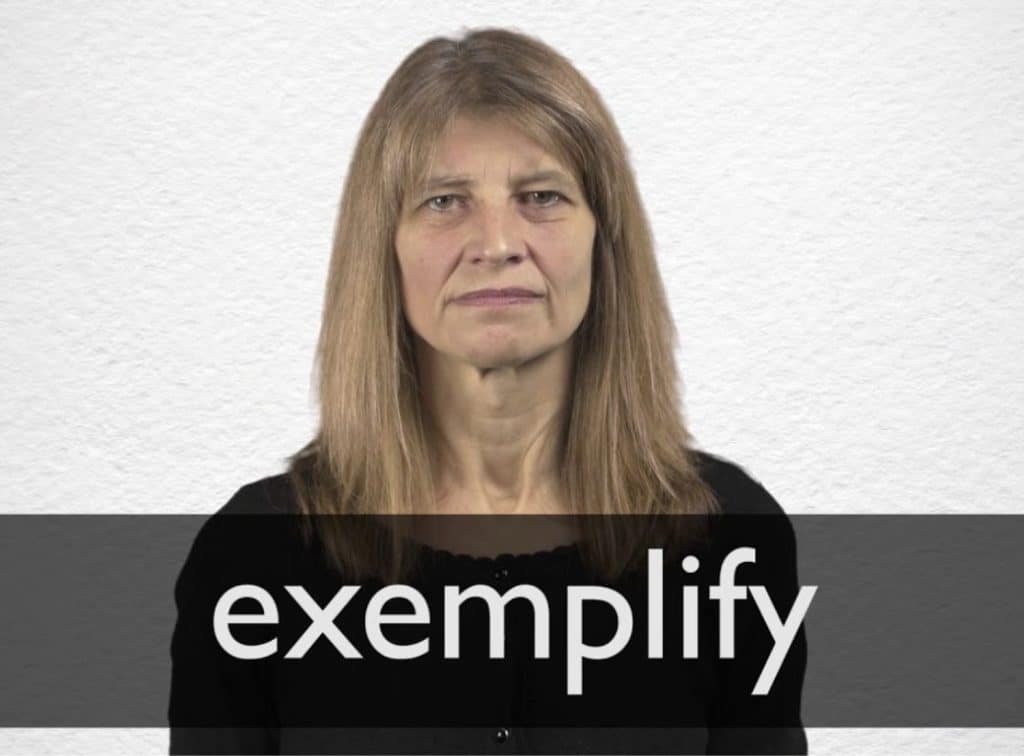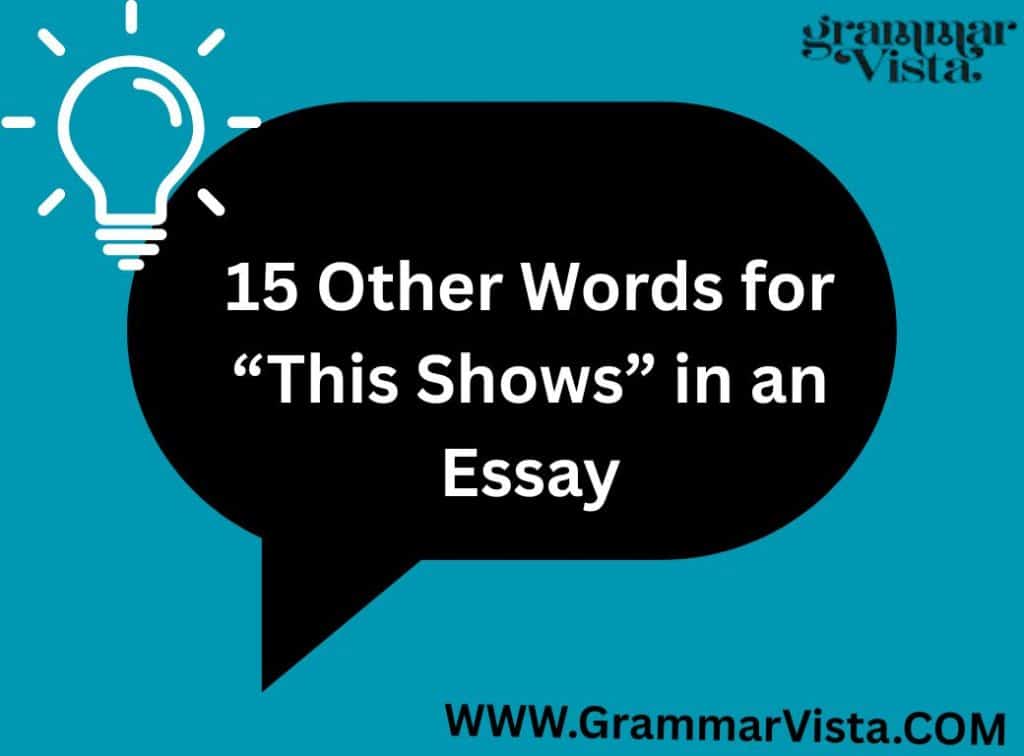Have you ever felt your writing could use a little more flair? The phrase “this shows” can quickly become overused, leaving your essays feeling bland and repetitive. In this reading, we will explore 15 other words for “this shows” in an essay that not only illustrate your points more vividly but also elevate your writing style.
By the end, you’ll have a toolbox of synonyms that highlight the nuances in your arguments and indicate a deeper understanding of your subject matter.
Illustrates
When you use the term “illustrates,” you effectively create a visual connection between concepts, inviting your audience to see the relationships at play. This word serves not only to present evidence but also to paint a vivid picture in the reader’s mind, making abstract ideas more tangible.
By using “illustrate,” you demonstrate how one idea connects to another, guiding your audience through your argument with clarity and purpose. Illustrating an argument goes beyond mere explanation; it invites readers to engage with the material on a deeper level.
When you incorporate examples or anecdotes alongside this term, you transform your essay into a narrative that resonates with the reader’s experiences. This storytelling aspect can be particularly powerful, as it encourages empathy and understanding, leading to a more persuasive and impactful piece of writing.
Highlights
When crafting an essay, varying your vocabulary enhances readability and adds depth to your arguments. Using phrases like “highlights” can effectively emphasize the importance of specific aspects, drawing the reader’s attention to crucial points that bolster your thesis.
This word encapsulates the idea of shedding light on significant details, making it a powerful tool in persuasive writing. By highlighting key evidence or themes, you create a roadmap for your audience, guiding them through your thought process and reinforcing your argument’s significance.
Indicates
Another word for this shows is “indicates”. When you use the word “indicates” in your essay, you are elevating your argument by highlighting the importance of the evidence presented. This term suggests a more nuanced relationship between the data and your conclusions, emphasizing that the evidence is not just passively presenting information but actively guiding your reader toward understanding.

By incorporating “indicates,” you invite your audience to consider the implications of the evidence, fostering deeper engagement with your argument. Employing “indicates” adds clarity to your writing by underscoring the cause-and-effect dynamics at play. It conveys a sense of direction, suggesting that the evidence leads to specific interpretations or conclusions.
Reveals
The word “reveals” serves as a powerful tool in academic writing, inviting readers to uncover layers of meaning that might not be immediately apparent. When an author uses “reveals,” they are not just stating facts; they are encouraging a deeper exploration of the subject matter.
This term suggests that there is more beneath the surface, prompting readers to question and analyze the underlying messages or themes being presented. For instance, when a text reveals societal norms through character interactions, it invites readers to consider how these norms influence behavior and perceptions within that context.
By employing this term, writers can effectively convey the importance of their findings, signaling that what has been uncovered is significant enough to warrant further discussion and analysis. This dynamic word thus becomes instrumental in crafting essays that not only inform but also inspire critical thought and engagement with the material.
Portrays
“Portrays” is a powerful term that encapsulates the act of illustrating or representing ideas in a way that resonates with the audience. This word choice goes beyond a simple demonstration, creating a connection between the reader and the material being presented.
When an author portrays a concept, they invite the reader to visualize and engage with the subject matter on a deeper level, almost as if the text is a canvas and the words are strokes of paint that bring a vivid picture to life.
Incorporating “portrays” into your essay can elevate your argument by emphasizing the richness of the depiction. It suggests not just a presentation of facts but also an artistic interpretation that invites empathy and understanding.
Reflects
When an argument is articulated effectively, it reflects the author’s expertise and deep understanding of the subject matter. By using “reflects,” you convey the idea that evidence supports a claim and also imply a mirror-like quality where the facts and insights resonate with the broader themes of your essay.
This word invites readers to consider how the information presented connects to larger concepts, creating a richer tapestry of meaning. Employing “reflects” encourages a more nuanced exploration of your ideas. It suggests that the evidence does not merely exist in isolation but interacts dynamically with your thesis.
This interaction can spark further contemplation among readers, prompting them to engage critically with the content. In this way, “reflects” serves as a powerful tool to elevate your writing, demonstrating not just knowledge but also an ability to synthesize and interpret complex information.
Conveys
When you employ the word “conveys” in your essay, you’re elevating your argument by adding a layer of sophistication and depth to your analysis. This term suggests that there is a deliberate transmission of meaning or emotion, inviting readers to engage more deeply with your ideas.
Rather than simply stating facts, “conveys” implies an active process of communication, encouraging you to explore how various elements—whether they be characters, themes, or symbols—interact to create a broader understanding.

Using “conveys” also opens up avenues for discussing the nuances of interpretation. It allows you to delve into how different audiences might perceive the same message in varied ways, thus enriching your essay’s complexity.
Represents
In academic writing, the word “represents” serves as a powerful tool to convey complex ideas succinctly. By utilizing this term, you truly grasp the essence of what’s being portrayed in your argument or analysis. It encapsulates not just a mere depiction but an embodiment of deeper meanings and themes within the subject matter.
This choice enriches your essay, allowing readers to see beyond the surface and engage with the material on a more profound level.
Employing “represents” adds depth to your writing, showcasing that you have a strong command of the material and can articulate its importance effectively. This word invites readers to explore connections between concepts, encouraging them to reflect on how one idea may symbolize or stand in for another.
Manifests
The term “manifests” carries a weight of significance that goes beyond mere presentation; it embodies the act of bringing ideas to life in a tangible form. When you use “manifests” in your essay, you’re not just stating what is evident; you’re inviting readers to engage with the underlying processes and connections that lead to those conclusions.
This word choice implies a thoughtful consideration of the material, suggesting that the evidence laid out doesn’t merely exist but has emerged through specific circumstances or influences.
Incorporating “manifests” into your writing adds depth and nuance, allowing for a richer exploration of themes and arguments. It compels readers to think critically about how various elements interact and coalesce to produce observable outcomes.
Exemplifies
The term “exemplifies” serves as a powerful tool in academic writing, particularly when aiming for a more sophisticated tone and depth of analysis. By employing this word, writers can elevate their arguments beyond mere statements of fact, instead presenting specific instances that illuminate broader themes or concepts.
For example, when discussing a literary work, one might say, “The protagonist’s journey exemplifies the struggle for identity in a fragmented society.” This clarifies the point being made and also invites the reader to consider the intricate connections between individual experiences and larger societal issues.

It suggests that the examples provided are not random but rather serve as representative cases that encapsulate key arguments. When writers articulate how certain phenomena exemplify particular trends or ideologies, they engage their audience in a deeper dialogue about the implications of their findings.
Displays
In academic writing, the term “displays” serves as a powerful alternative to “this shows,” offering a more sophisticated tone and depth of analysis. By using “displays,” you invite your readers to visualize the evidence or argument at hand, creating a vivid mental picture that enhances comprehension.
This word highlights the presentation of information and also emphasizes the active role of the subject in revealing underlying themes or truths.
It conveys a sense of intentionality, suggesting that the data or narrative is purposefully arranged to communicate specific ideas. This nuanced choice enriches your prose, allowing for a more impactful manner of articulating your insights.
Evidences
When you use the term “evidences,” you’re not just presenting facts; you’re laying a foundation that is essential in substantiating your arguments and bolstering the credibility of your essay. This word emphasizes the importance of tangible proof, urging readers to consider the data or examples that lend weight to your claims.
By framing your assertions in terms of evidences, you encourage critical thinking and invite your audience to explore the validity of your points. Supportive examples play a pivotal role in this context, as they transform abstract ideas into concrete realities.

Whether drawing from empirical studies, historical events, or real-world scenarios, these evidences act as a bridge connecting theory to practice.
Signifies
In the realm of academic writing, the choice of words can significantly influence the clarity and impact of your arguments. The term “signifies” emerges as a sophisticated alternative for expressing the concept of demonstrating or indicating in your essay.
By employing “signifies,” you elevate your discourse, inviting readers to delve deeper into the implications of your claims. This word not only conveys meaning but also suggests a layer of significance that transcends mere observation, prompting readers to consider the broader context of your argument.
Using “signifies” allows you to connect your ideas with an aura of authority and precision. For instance, when discussing historical events or literary themes, stating that a particular action “signifies” a shift in societal values can lead to richer interpretations.
Evokes
The term “evokes” serves as a powerful alternative expression to convey the idea of suggesting or indicating within your essay. When you use “evokes,” you invite your readers to engage more deeply with the emotional or intellectual response that your argument elicits.
This word implies a sense of resonance, making your points not just informative but also impactful. For instance, when discussing literature, you might say that a particular scene evokes feelings of nostalgia, thereby encouraging your audience to reflect on their own experiences.
Employing “evokes” can enhance the richness of your writing by bridging the gap between abstract ideas and tangible emotions. It allows you to paint vivid pictures in the minds of your readers, transforming a simple statement into an evocative experience.
Manifests
When you use the word “manifests,” you invite your readers into a deeper understanding of how concepts or themes reveal themselves in various contexts. This term goes beyond mere presentation; it suggests that ideas take shape and become visible through actions, behaviors, or phenomena.
For instance, when discussing a character’s growth in a novel, you might say, “Her resilience manifests through her unwavering determination in the face of adversity.” This phrasing adds an engaging layer to your analysis, inviting readers to visualize and connect with the character’s journey on a more profound level.
It can serve as a powerful tool for illustrating complex theories or arguments. In an essay examining societal change, one could write, “The shift in public perception manifests in the increasing support for environmental policies.”
Conclusion
Expanding your vocabulary with other words for “this shows” in an essay that can significantly enhance the clarity and sophistication of your writing. By incorporating expressions like “this illustrates” or “this demonstrates,” you convey your ideas more effectively and also engage your readers more fully.
Each synonym carries its own nuance, allowing you to choose the most fitting term for your context. Remember that varied language can make your essays more compelling and enjoyable to read.







